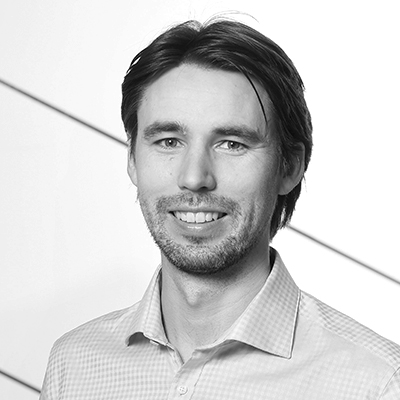Virtual innovation?
on LinkedIn:
Earlier this year Cambridge Design Partnership went global with the launch of a new East Coast engineering center in Raleigh, North Carolina, allowing us to better address the needs of our growing North American customer base. The obvious challenge however, is the 3,868 miles between our creative teams.
CDP’s essentially holistic design process requires close collaboration. Take brainstorming for example, a fundamental step in the design process, where team members with different skills and experiences come together to discuss problems and generate new solutions. During these sessions new ideas are sparked, shared and built upon. Without the major carbon impact of engineers and designers leaping on a plane, the challenge was to replicate the brainstorm experience virtually by exploiting different tools and technologies. We needed the teams to feel as though multiple locations had been merged together with everyone feeling relaxed and engaged so that they could fully contribute. It’s crucial that the team can see and hear one another as well as look at what’s being created whether it be sketches, models, prototypes, videos or other simulations.
Yes, there are well known high-end, off the shelf solutions for this from the big video conference providers, but we wanted to create a flexible and scalable solution by leveraging the desktop and mobile video conference tools that are becoming ubiquitous in international commerce.
Firstly, we needed to get the right technology in place and secondly, we needed to get the team feeling comfortable and confident using the technology. Here’s how we did it:
Minimum requirements
First of all we kitted out specific meeting rooms in each location with the audio and video equipment needed to reach a minimum level of fidelity. Essentially each room needs to have enough cameras and screens for all team members to see and be seen. This makes the team feel connected rather than just having one camera focused on the whiteboard. We link these cameras and screens to the Zoom platform that we use across CDP.
A key tool we use is the smartphone. This provides the flexibility for individual members to communicate very quickly. For instance, if there is a sketch or prototype they want to show, they can grab their smartphone, activate the camera and immediately share it.
Having good audio is essential. We’ve all had bad experiences with dropped calls and delays, which won’t do any favours for successful group dynamics. There are some great plug and play teleconference devices on the market and, together with high speed, low latency internet you’re well on your way to stutter-free conversations.
To integrate the rooms further, you need high-definition video so participants can clearly see each other’s facial expressions and body language, which is surprisingly important.
Tips from lessons learned
Firstly, we always set up the meeting rooms in advance because there is often a technology ‘moment’ that needs resolution, and you don’t want to lose that creative vibe fiddling with IT issues. So our engineers can walk into the room, open the meeting and we’re up and running.
Secondly, we make it as easy as possible for participants to dial-in and we ensure we have back up options. You can easily email a link to join a meeting and with one click and the participant is in.
Thirdly, don’t forget the conventional brainstorm best practices apply as normal, with a facilitator who takes charge of the session with a clear plan and issuing briefing documents well ahead of time.
Benefits
With a number of virtual brainstorming sessions now under our belt, we’ve found that the technology can actually enhance the brainstorming experience. For instance, instead of those in the same room huddling around an A4 drawing, by using smartphone cameras that drawing can immediately be shared with everyone on a screen regardless of their location.
Working across time zones can actually work to your advantage as team members can effectively work on a creative brainstorm for an extended day. The team in the first office can prepare for the session and then after the event, the team in the second office can collate the output and develop and visualise the best ideas after their colleagues have gone home.
Also with a virtual brainstorm it’s easier and quicker to organise and assemble the right people, whether that be one large group or smaller separate groups. It also scales beyond CDP, as clients and key partners are able to join virtual brainstorms effortlessly. A key benefit is that it enables privacy at the touch of a button. In other words, if during the session the client team would like a quick breakout to discuss strategy or sensitive information, they can simply mute their video, have a chat between themselves and then unmute to join the session again.
Another key benefit is that sessions can be easily recorded. This can be useful in helping to decipher exactly what concepts were shared during the session. It’s also potentially useful for IP and communication with lawyers when drafting patents.
Let the miles disappear
Having done a number of virtual brainstorming sessions between our Raleigh and Cambridge sites, and having ironed out the kinks by getting everyone comfortable and confident with the technologies, we’ve found that although we may be 3,868 miles apart those miles disappear as the two rooms merge in the heat of creativity.
Now, with an effective process and with the various technologies in place, we look forward to many more exciting brainstorms amongst our team and our customers, wherever they are in the world.

Jez Clements
Partner and Business Development Leader

Aki Laakso
Engineering Lead